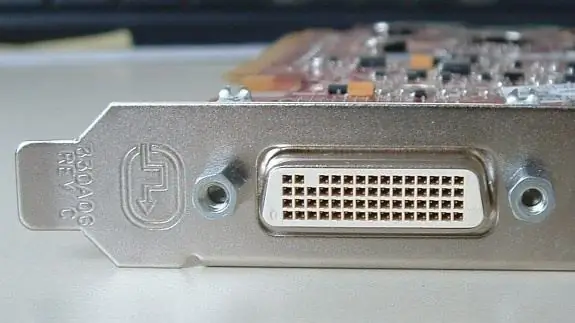On video cards, as on motherboards, electrolytic capacitors fail. In addition, they often have problems with cooling. Many video adapter malfunctions can be fixed at home.

Instructions
Step 1
Shut down the computer operating system. Unplug the power cords from both it and the monitor. Disconnect the monitor from the graphics card. Only then remove it.
Step 2
Check the board for swollen electrolytic capacitors. Graphics cards often have fewer layers than motherboards and are smaller in size, making it easier to replace capacitors. But remember that in front of you is still a multilayer printed circuit board, so it is necessary to replace it quickly, avoiding overheating of the conductors of its inner layers. When replacing capacitors, observe the polarity of their connection.
Step 3
Reinstall the card in the computer and check if it works. If it hasn't recovered, see if the fan is spinning. If it stops or is completely absent, repeat the procedure for disconnecting the computer and monitor and removing the video card.
Step 4
Try to lubricate the stopped fan. Carefully, so as not to bend the board, remove it from the heatsink. Peel off the sticker from its back, pull out the cap, and then insert a drop of machine oil into the bearing. You cannot use vegetable oil. Reinsert the cap, wipe it dry, then stick a piece of tape instead of the sticker.
Step 5
After lubricating, rotate the fan with your finger for a few minutes until it is free to rotate. Then put it back in place. If you unplugged it from the connector on the board, plug it back in.
Step 6
If there is no fan at all, find a device suitable for the size of the heatsink and secure it with four screws. If there is no heatsink on the chip, do not try to drill holes for the fan in the board (some novice craftsmen think of this as well). Take AlSil-5 brand glue, firmly glue a suitable heat sink to the card chip (make sure it does not short-circuit the chip leads), and then install a fan on it. Apply power to it (5 or 12 volts, depending on the type) with the correct polarity.
Step 7
Install the graphics card in your computer and test it. If the problem was cooling, now it will work stably.






